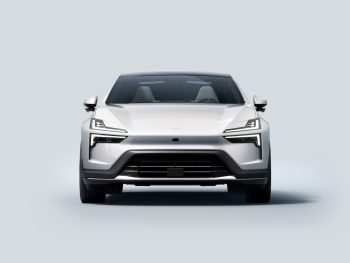Polestar to work with Mobileye on autonomous driving tech for Polestar 4
The forthcoming Polestar 4 SUV-coupé will become the first production car to feature Mobileye’s Chauffeur autonomous driving technology under a new collaboration.

First deliveries of the Polestar 4 are expected in China before the end of 2023 ahead of a global launch in 2024
The tie-up between the two firms will also potentially roll out the technology to future Polestar vehicles.
The Polestar 4, debuted at the Shanghai motor show this year and pitched as a “new breed of SUV coupé, will kick off the partnership with by featuring a Mobileye SuperVision-based ADAS from the start, integrated by ECARX. First deliveries of the new model in China are expected before the end of 2023 ahead of a global launch in 2024.
The technology is expected to evolve in the coming years to offer eyes-off, point-to-point autonomous driving on highways, as well as eyes-on automated driving for other environments.
Mobileye’s advanced driver assistance system (ADAS) technology is already fitted to over 150 million cars worldwide.
Thomas Ingenlath, Polestar CEO, said: “I am really happy with how Polestar 4’s production readiness is advancing. A collaboration with Mobileye can significantly push innovation in our Polestar 4 electric performance SUV-coupé. We know that driving yourself is not always fun and exciting – this technology means our customers could enable autonomous driving when they want, making all future journeys enjoyable.”
John Hayes, CEO and founder of autonomous driving innovator Ghost Autonomy, believes Mobileye’s partnership with Polestar represents a significant step towards reaching L3 and L4 autonomy for the automotive industry. However, this also signals a shift in how OEMs innovate to integrate autonomous vehicle technology in their cars, as internal AV projects stagnate in favor of third-party providers.
“In the next two years, consumer vehicles will soon be able to navigate highways autonomously without the constant need for driver oversight – and the real promise of autonomous driving will finally manifest at real consumer scale.
“Partnering with Mobileye is another data point in the growing trend of OEMs looking externally to deliver the most advanced autonomous driving capabilities. Initially, Polestar and Zenseact sought to build a software stack for AVs in-house, but now they’re moving to a third-party supplier. As their competitors ship significantly more advanced capabilities and their internal efforts stagnate, more OEMs will likely follow suit to catch up.
“The race is on to get the most advanced capabilities to market as soon as possible, given the stakes and the size of the emerging consumer autonomy market. With the Polestar deal, Mobileye is getting $6k per car for their technology – a significant step up from the current $50-$100 they get for their chips.”
Positioned between the existing 2 saloon-cum-hatchback and the forthcoming 3 SUV, the Polestar 4 combines distinct design elements from the Polestar Precept concept car with the aerodynamic lines of a coupé and the space and comfort of a modern SUV. It’s targeted to deliver up to 372 miles of range.
Positioned between the existing 2 saloon-cum-hatchback and the forthcoming 3 SUV, the Polestar 4 combines distinct design elements from the Polestar Precept concept car with the aerodynamic lines of a coupé and the space and comfort of a modern SUV. It’s targeted to deliver up to 372 miles of range.

